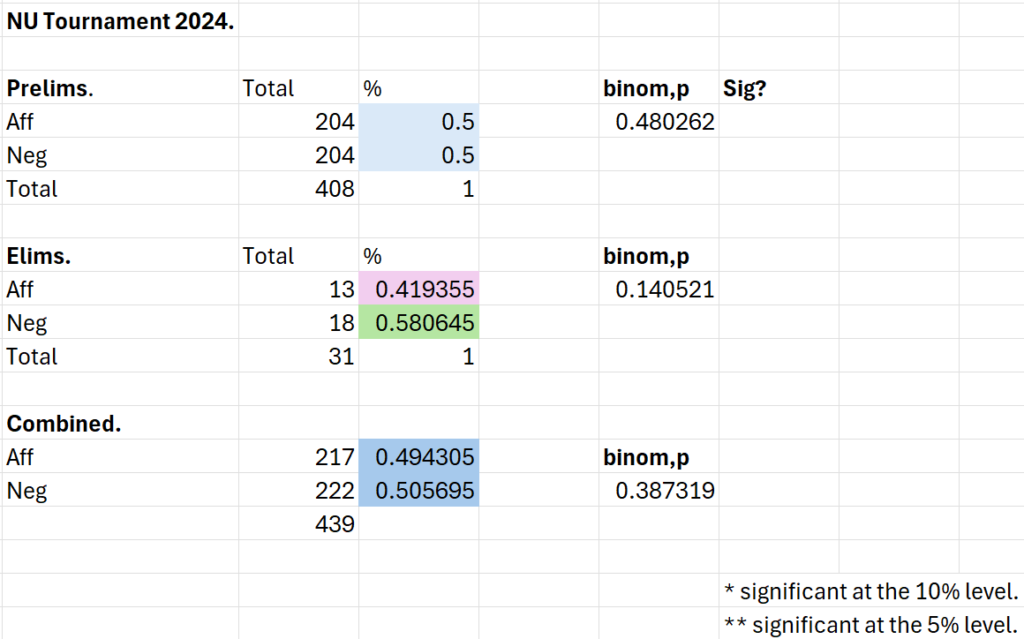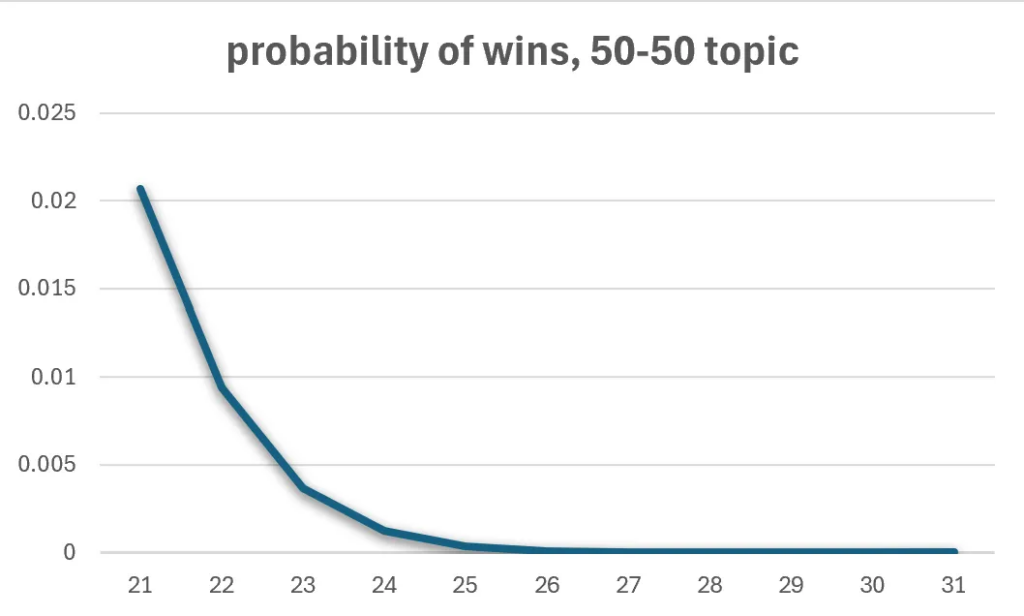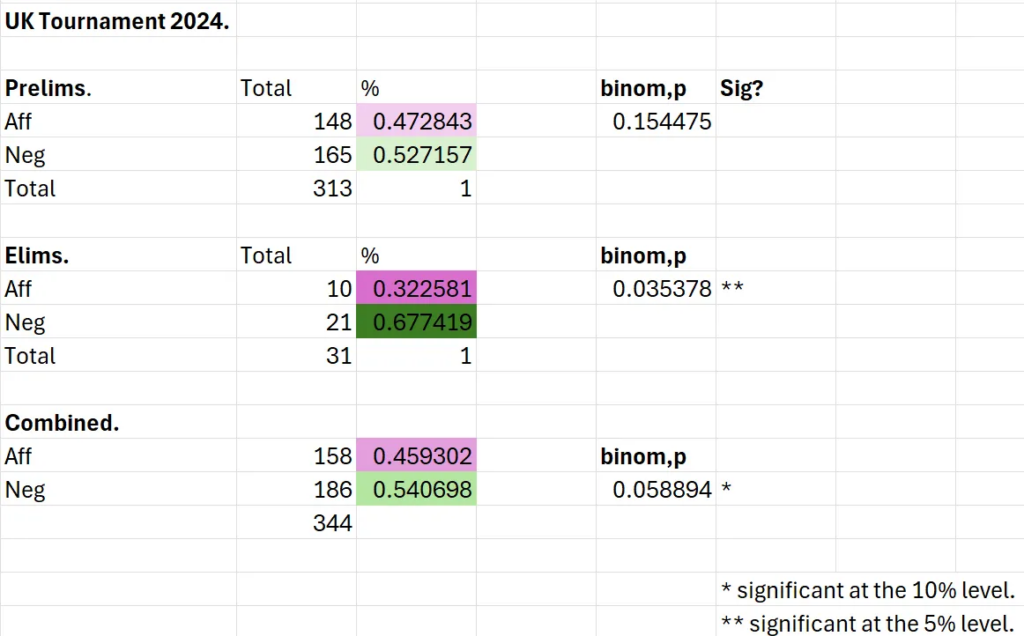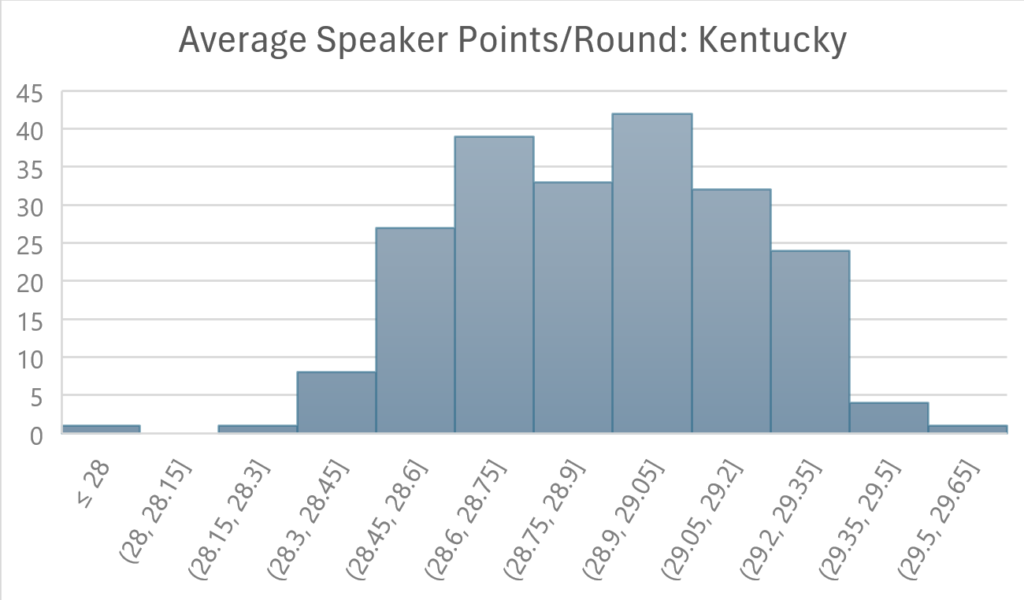The following is a guest post by Jack Young, debate statistician. You can find the original post here:
Below is a collection of data for the Northwestern and Kentucky tournaments. Thanks to Manny Navarrete for collecting lots of raw data, especially for the Kentucky tournament.
1. Side Bias: Neg’s Advantage is Notable; Statistically Significant in Elims
Northwestern
There were 408 prelims at the Northwestern tournament. Remarkably, the debates were exactly 50/50—the both the aff and neg won 204 debates. This is fairly remarkable, since the chance of exactly 50/50 odds given 408 debates is only 3.9%.
Out of the 31 elimination rounds, the neg won 18 — a 58% win probability. This is notable, but not statistically significant, with a p = .14.

Kentucky
Out of 313 prelims at Kentucky, the neg won 165 debates, having a solid 52.71% win percentage. The result is a p-value of .183 — suggesting that, on a perfectly fair topic, there is a 18.3% chance of observing 165 or more wins. This is insufficient evidence to claim Kentucky prelims were neg biased, although a +2.71% win rate with a decently large sample is worth noting.
In elimination rounds, though, the results are quite staggering: the neg won 21 of the 31 total rounds, including three-quarters of doubles, all quarterfinals, splitting semifinals, and finals. The p-value in elims is 0.035 — statistically significant at the 5% level. The results of Kentucky elimination rounds provides some decent evidence the topic could be neg-biased, particularly at the highest level of competition. These results, however, are content-agnostic: I didn’t calculate the win rate of the states counterplan, elections, econ, framework, etc. It could support other hypotheses, but the observed outcome is unlikely to occur by chance if the true win rate were 50%.

Combining both prelims and elims, the neg had a 54.1% win rate, with a p-value of .0588, reaching statistical significance at the 10% level but narrowly missing the 5% level.
Raw Data Table.

Using both Kentucky and Northwestern elim data, we get the combined total of:

The resulting p value, .027, is statistically significant at both levels. (This may be counterintuitive, but the increased number of trials from Northwestern actually decreased the likelihood of Kentucky being an anomaly.)
2. Speaker Points
Northwestern
Here’s the histogram for Northwestern:

μ = 28.93239
Ω = 0.283676
Top speaker, Graham Revare, averaged a 29.55.
Kentucky
Here is the histogram for Kentucky:

μ = 28.88368
Ω = 0.274883
Top speaker, John Marshall, averaged a 29.55.
